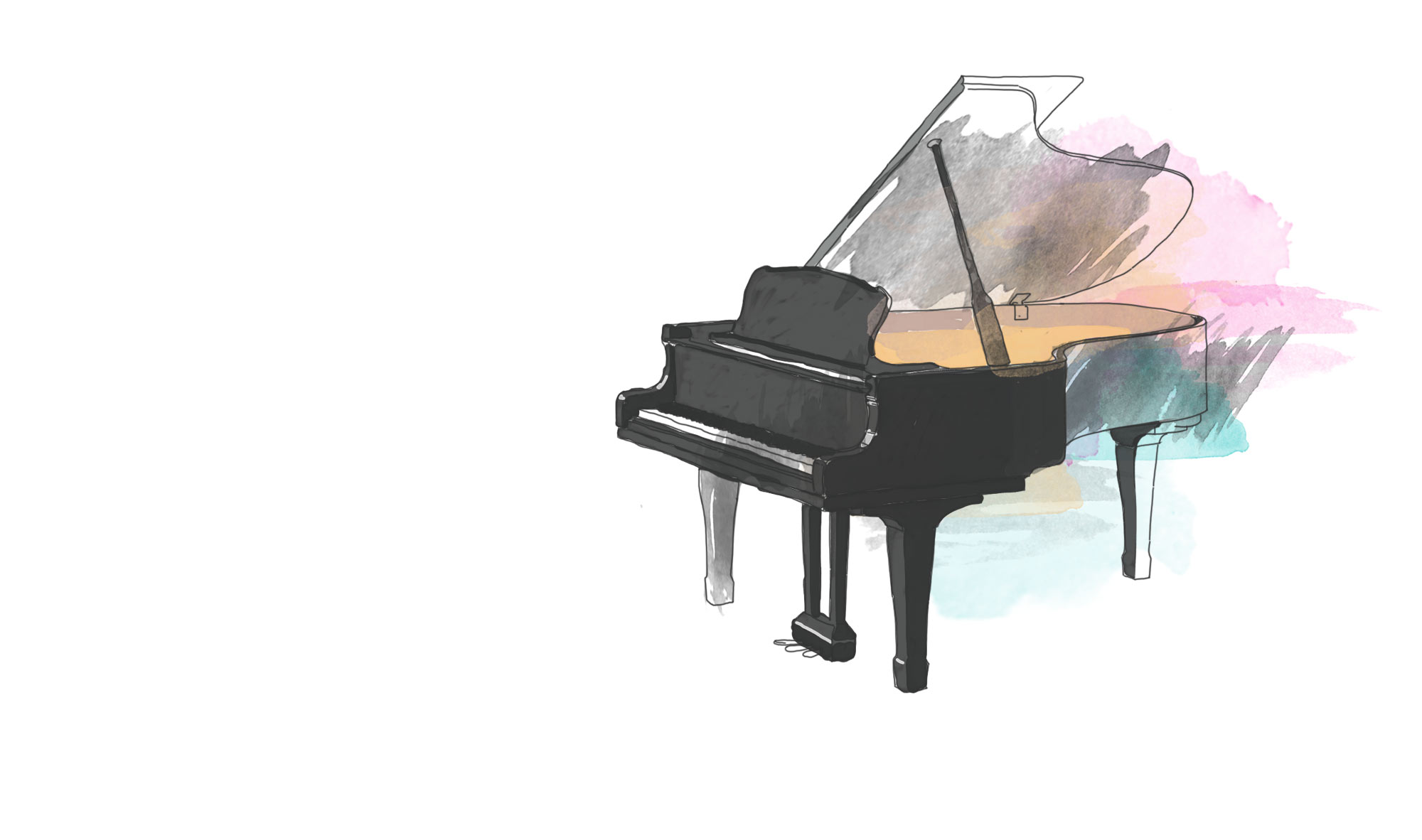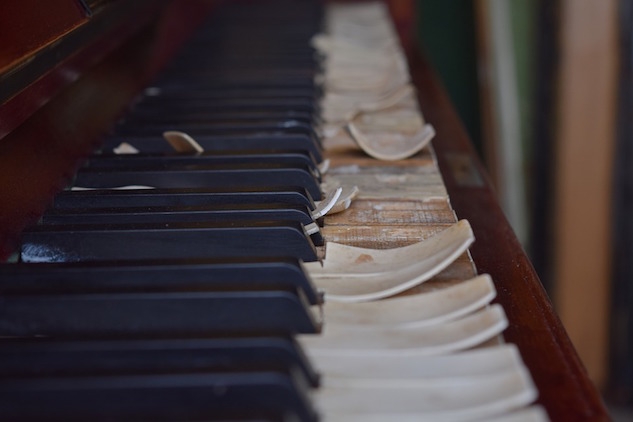There are lots of second hand pianos for sale privately on-line, on Ebay, Gumtree and free to collector sites. You may think you are getting a bargain, but you could bring the piano home and find all sorts of problems that would cost you lots of money to sort out. The best thing is to ask a good piano technician to check the piano out before you buy and Dave would be happy to do that for you and it is always best to try before you buy! However, here are are few tips if you go it alone. It could save you ££'s in the long-run.
1. Iron Frame or Wooden Frame
First of all make sure that the piano is iron framed.
You can do this by removing the top panel. You will now see the strings of the piano attached to either a wooden frame or an iron frame. Wooden framed pianos are not usually worth as much and very often will not tune up as well. The iron frame has to withstand many tons of tension from the strings and sometimes, although quite rarely, the cast iron frame can develop cracks, so it is worth a good inspection of the frame to check for this. If it is cracked anywhere then it is best to steer clear of the piano, or get some specialists advice. In better makes of piano you will find that it has a 'full' iron frame which means that it comes up above and along the top of the tuning pins as opposed to a 3/4 frame which ends just below the tuning pins. (Tuning pins are at the top end of the piano - can be seen by lifting the lid). Nowadays there are not that many wooden framed pianos around, but if you do come across one, steer well clear!
2. Split Soundboard?
Secondly, look out for the splits in the soundboard. The soundboard (usually made of spruce) is the large wooden area behind the strings which vibrates and amplifies the sound. Due to pianos being kept in rooms that are far too warm, often the sound board will develop splits. This will usually cause the piano to produce an unhealthy sounding 'buzz' when notes are played loudly. It is worth doing a check again, so as before, remove the bottom panel and inspect the wooden area behind the strings. Also remove the top panel and if possible check behind the action also. (The action is the mechanical workings of the piano) splits in the soundboard may not always cause problems. There are probably hundreds of old pianos which have split soundboards and no-one has ever noticed but again if in doubt seek specialist advice. (If a split soundboard is causing problems it can quite often be expensive to repair).
3. Loose Tuning Pins?
Thirdly, watch out for loose tuning pins. You will see the tuning pins by lifting the top lid of the piano. Each string is wound round a tuning pin which is driven into a wooden board called the 'wrest plank'. If the pins are tight the the piano is more likely to stay in better tune for longer. Sometimes pins work loose with age and or excess dryness and again can be expensive to put right. Other times pins can be loose due to a cracked wrest plank. Inspect each of the pins and check that there are no splits or cracks around or near them. If there is a problem with loose pins then the piano will be horribly out of tune and this should be evident even to an untrained ear! If the pins are normal then the piano should be in good tune and tuned to concert pitch (concert pitch is a standard pitch which all instruments are tuned to: A=440hz).
4. Straight Strung or Overstrung?
Straight strung and overstrung are the two most common types of upright piano. Straight strung is the cheaper more basic type of piano. The strings run vertically all the way along from bass (left) to treble (right). Overstrung is where the strings cross over each other. You can check by either lifting the lid of the piano or removing the bottom panel. The advantage of an overstrung piano is that the strings run diagonally, which means you can get a longer length of string in the piano. The longer the string, the richer the tone will be. Which is why concert grand pianos are about 9 foot long.
The dampers are pieces of felt which stop the strings from vibrating when you take your fingers off a key. Under-damped pianos are more efficient than over-damped. However, most straight strung pianos are over- damped as this is sufficient. Some overstrung pianos are also over-damped. These are usually not so good as under-damped pianos and this should be reflected in the price. You can tell if an action is over-damped or under-damped by lifting the lid of the piano. If it is over-damped then you will see a wide piece of wood running flat above the hammers to which the dampers are attached. If it is under-damped then you will be able to see the hammers and also the dampers just below them resting against the strings. Other points to look out for:
• Check the whole piano thoroughly for woodworm.
• Check that the action is not moth eaten or in a bad state of repair.
• Check that each note plays correctly and sounds reasonable.
• Check how old the piano is and about history that my be known.
• Check the make of the piano (well known pianos are generally worth more).
• Check that the piano is tuned to A440 concert pitch.
• Check how much delivery charges are likely to cost (if there are stairs involved this could cost extra).
When you do get your piano, remember to look after it. Make sure you have it tuned and maintained regularly by an experienced and reputable technician.
Hope this advice helps!


Comments